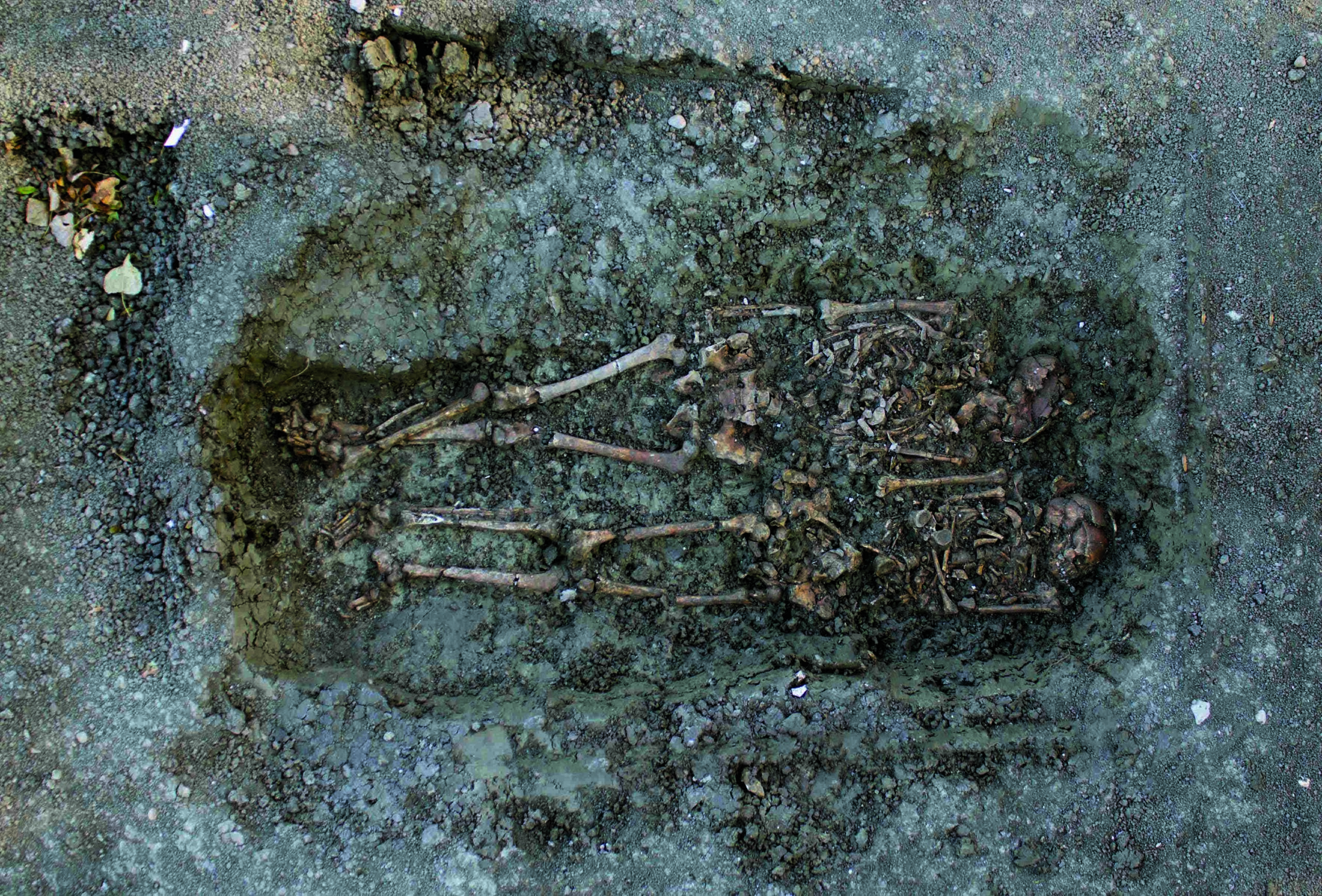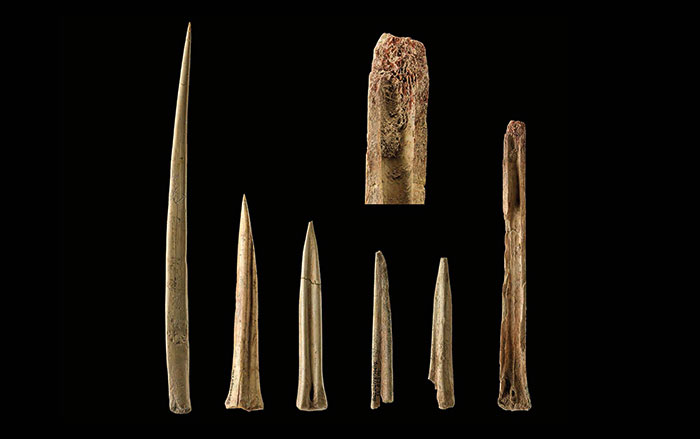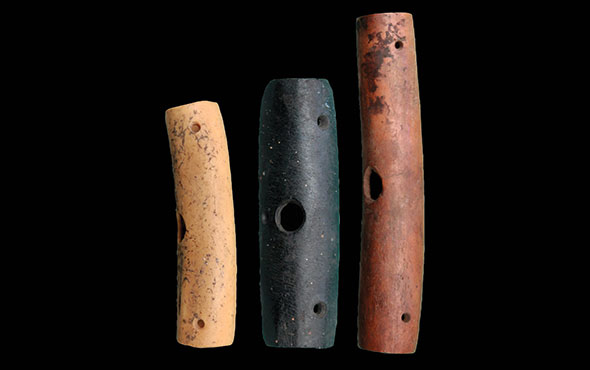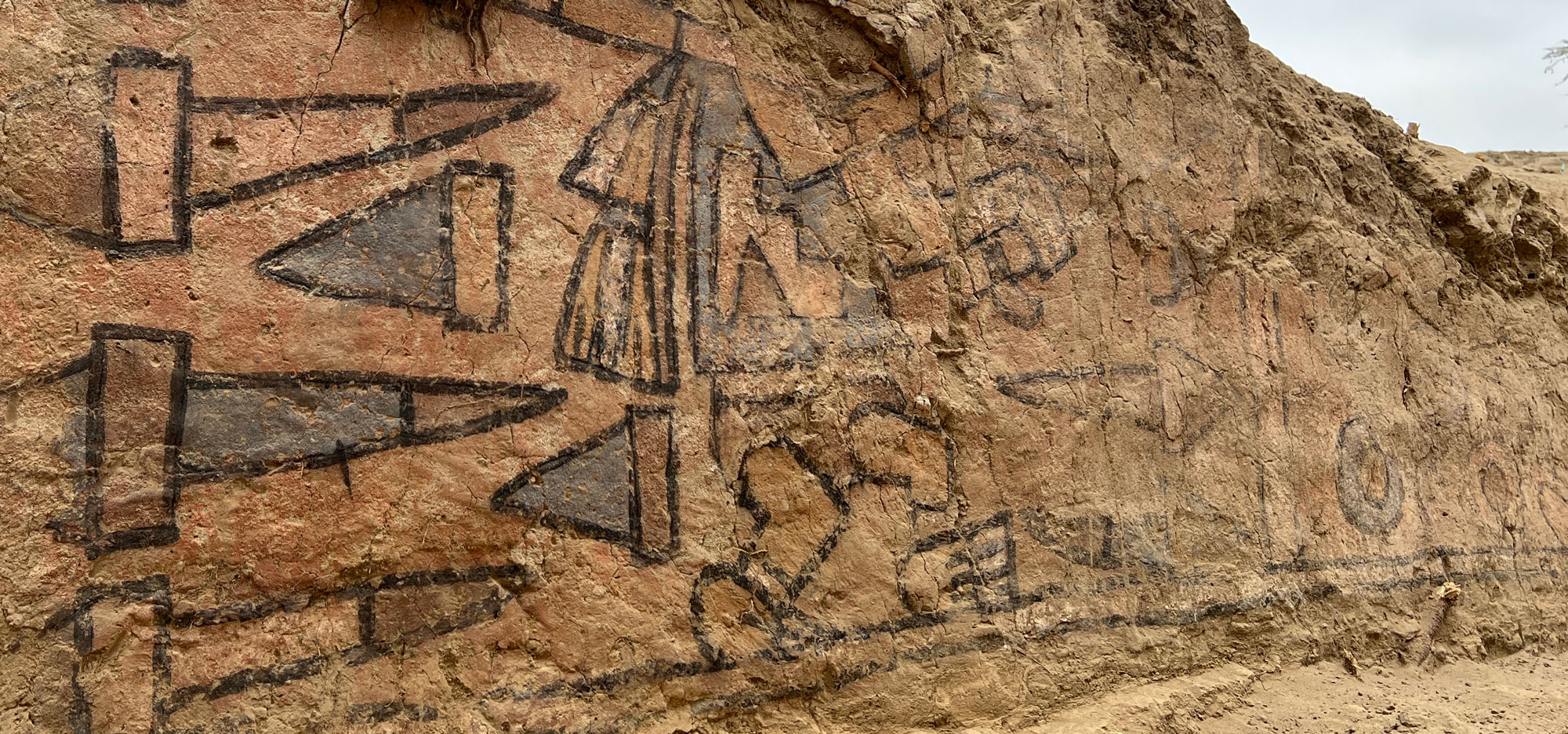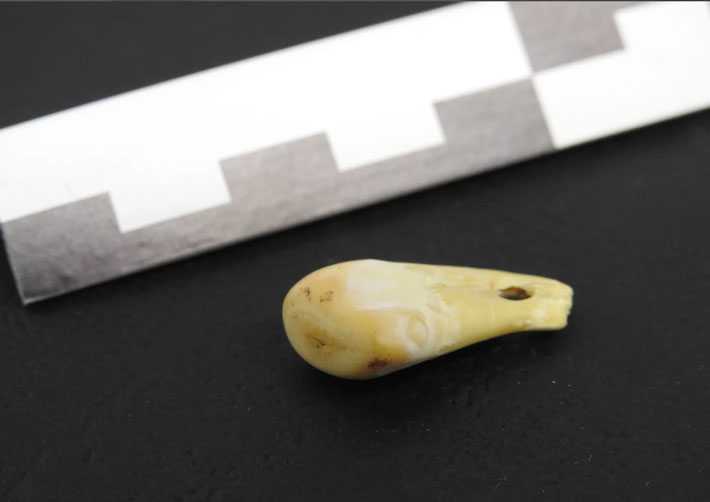
LEIPZIG, GERMANY—According to a report in The Guardian, a woman’s DNA has been recovered from the surface of a 20,000-year-old elk tooth pendant by a team of researchers led by molecular biologist Elena Essel of the Max Planck Institute for Evolutionary Anthropology. The pendant was unearthed in southern Siberia’s Denisova Cave by archaeologists who wore gloves and face masks during the excavation in order to avoid contaminating anything that they found with modern DNA. Laboratory researchers then immersed the artifact in a liquid to release any possible DNA from its surface. Analysis of the woman’s recovered DNA indicates that she was closely related to hunter-gatherers who lived to the east of the cave, in the foothills of the Altai Mountains. Team member Marie Soressi of the University of Leiden added that this technique could eventually help determine which species of hominin made particular artifacts when multiple species are known to have frequented a site. Read the original scholarly article about this research in Nature. For more on genetic testing of remains from the site, go to "Hominin Hybrid," one of ARCHAEOLOGY's Top 10 Discoveries of 2018.



